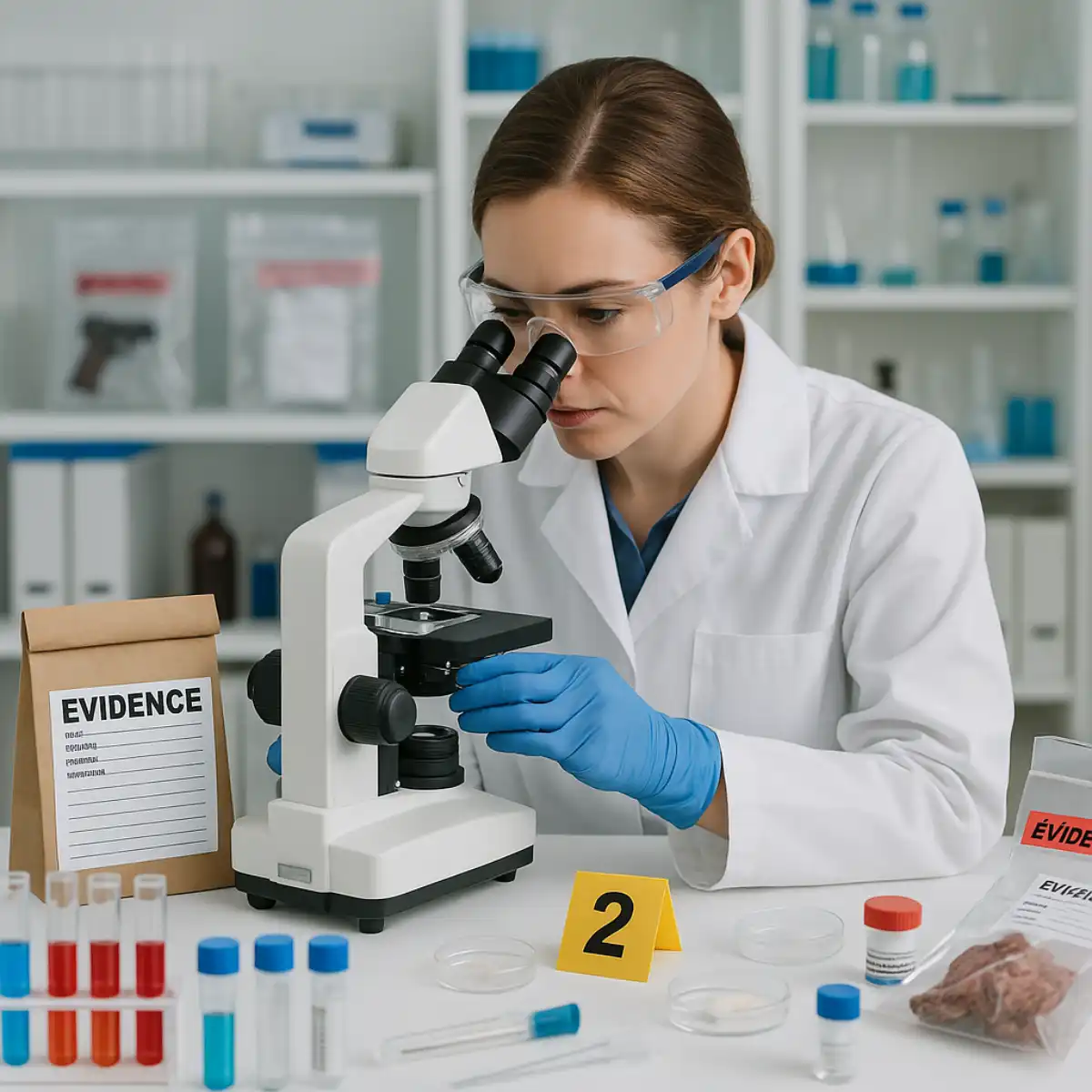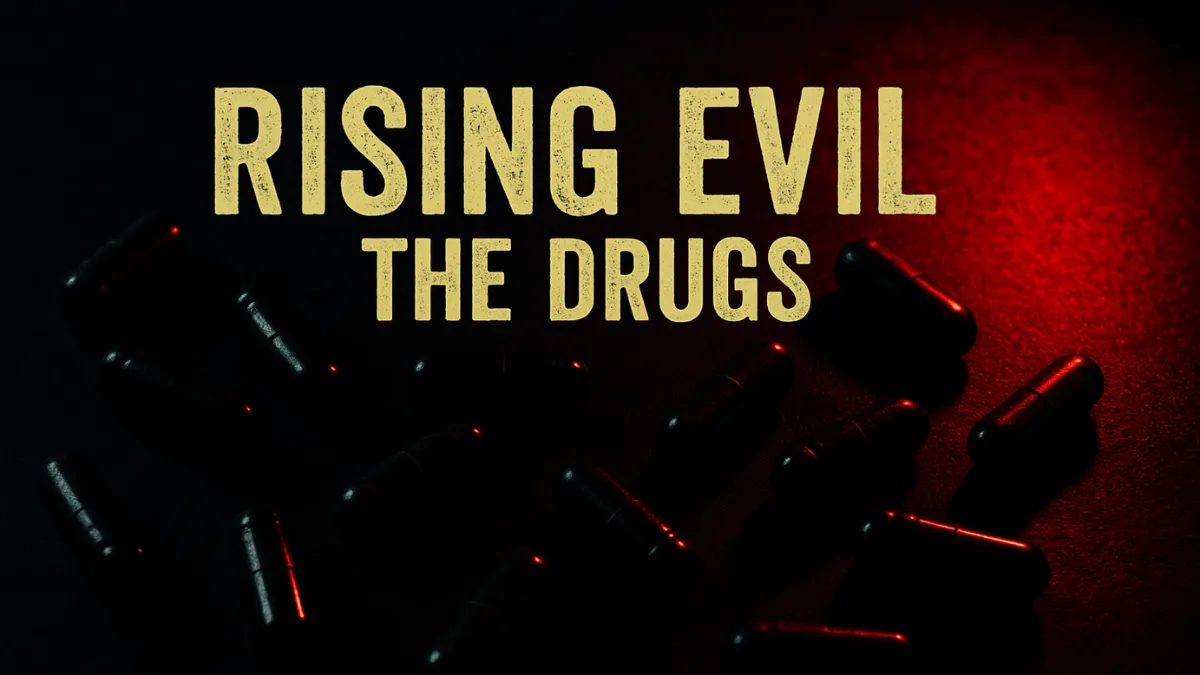Last Updated on August 8, 2025 by Nyayik Vigyan
Have you ever watched a crime show and wondered how detectives solve complex cases using tiny clues? The field of forensic science has captured public imagination like never before, with millions of viewers tuning in to shows like CSI and Criminal Minds each week. This fascination has sparked a genuine interest in understanding the real science behind solving crimes.
For students curious about this exciting field, forensic science kits offer an incredible opportunity to experience hands-on investigation techniques. These educational tools bring the crime lab directly to your home or classroom, allowing you to explore everything from fingerprint analysis to DNA testing in a safe, controlled environment.
Whether you’re considering a career in forensic science or simply want to understand how real investigators work, these forensic science kit provide an engaging introduction to the scientific methods that help solve crimes and bring justice to victims. They transform abstract concepts into tangible experiences, making complex scientific principles accessible to learners of all ages.
What is a Forensic Science Kit?
A forensic science kit is an educational package that contains tools, materials, and instructions designed to simulate real crime scene investigation techniques. These forensic science kits typically include various scientific instruments and supplies that allow users to conduct experiments and analyze evidence similar to what professional forensic scientists do in their daily work.
Most forensic science kits contain a variety of specialized tools and materials. Common components include fingerprinting supplies like
Fingerprinting Kit: Includes brush, fingerprint powder, and lifting tapes to collect and analyze fingerprints left at a scene.
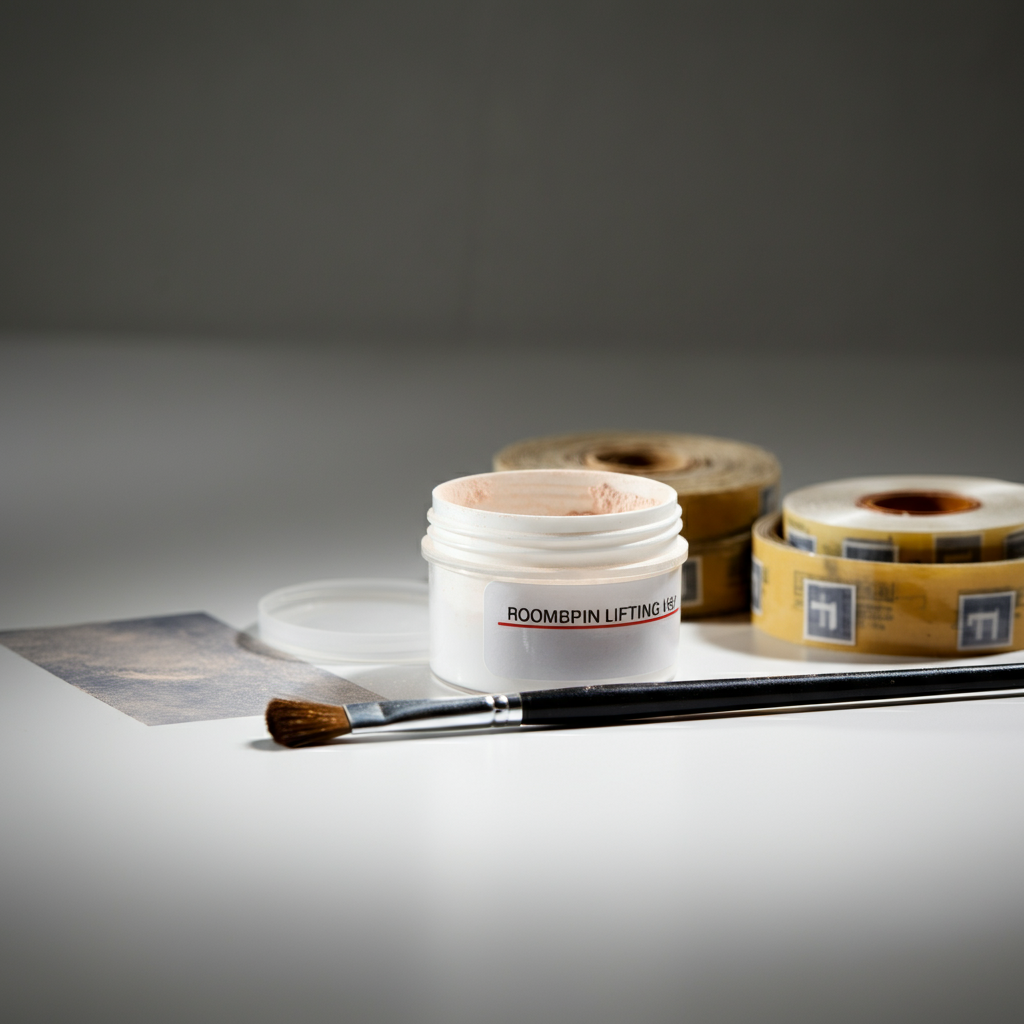
Dusting Powder and Brushes: Dusting powder and brushes are tools used in forensic science for applying and spreading fine powder to reveal latent fingerprints on surfaces, ensuring clear and detailed prints for analysis.

Lifting Tape and Fingerprint Cards: Which allow users to collect, preserve, and analyze fingerprints.
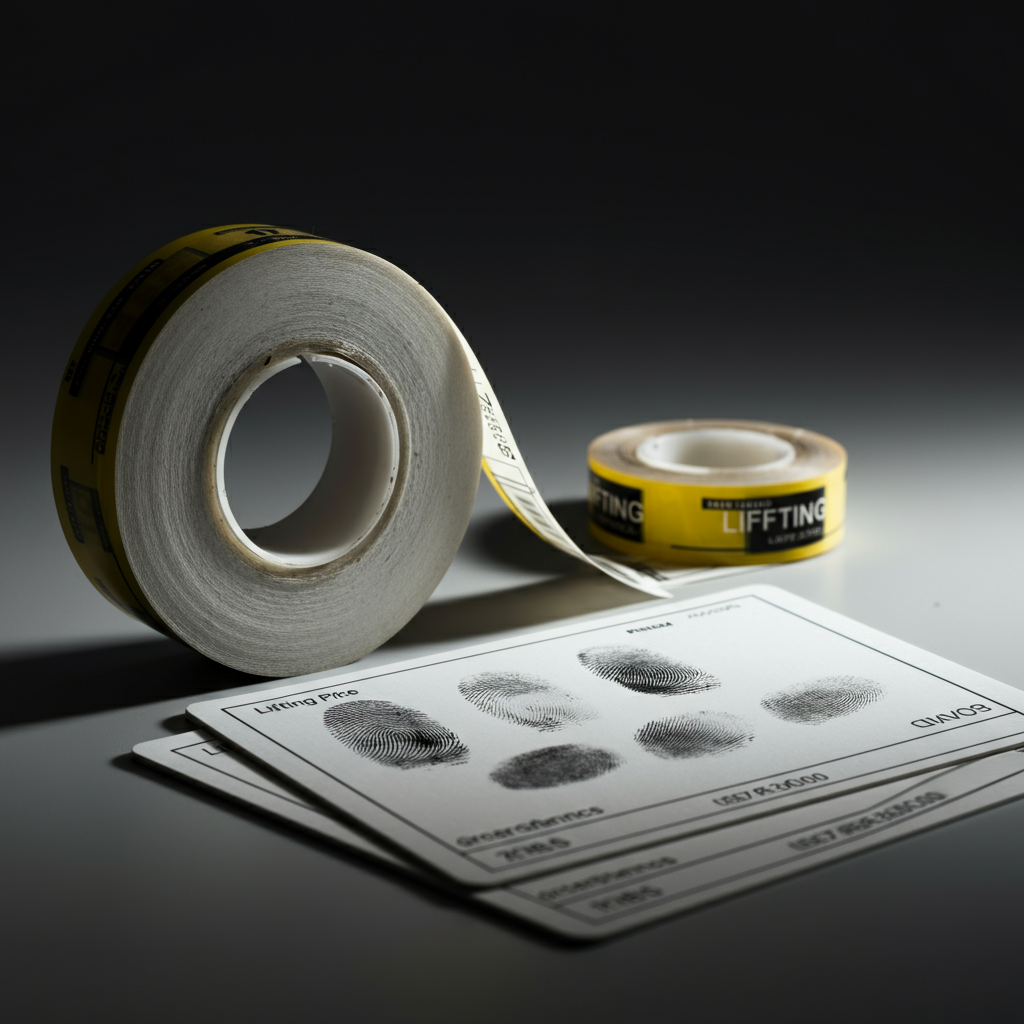
UV Light and Goggles: Useful for spotting blood, bodily fluids, or other evidence that fluoresces under ultraviolet light.

DNA Extraction Tools: Pipettes, test tubes, and reagents for isolating and analyzing DNA from small samples such as hair or saliva.
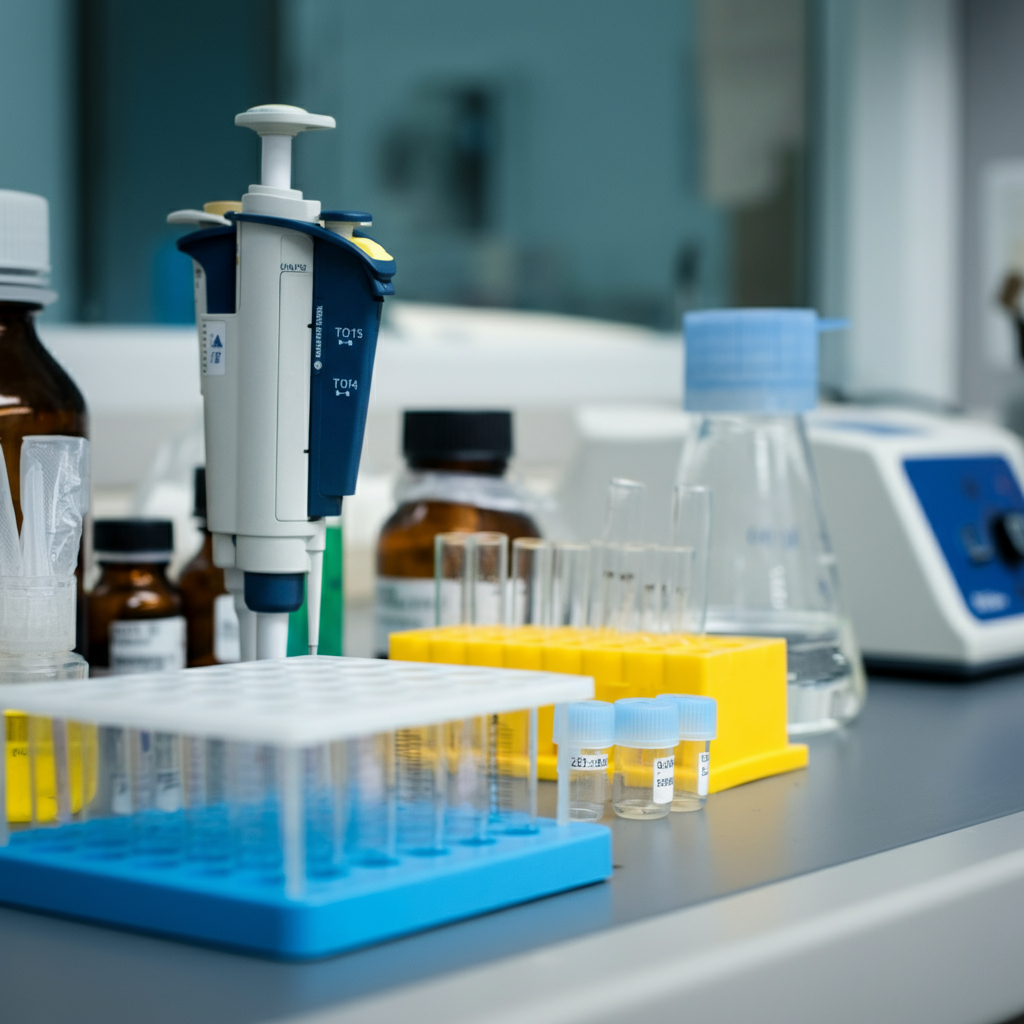
Evidence Collection Bags: Tamper-proof bags for safely collecting and transporting physical evidence without contamination.
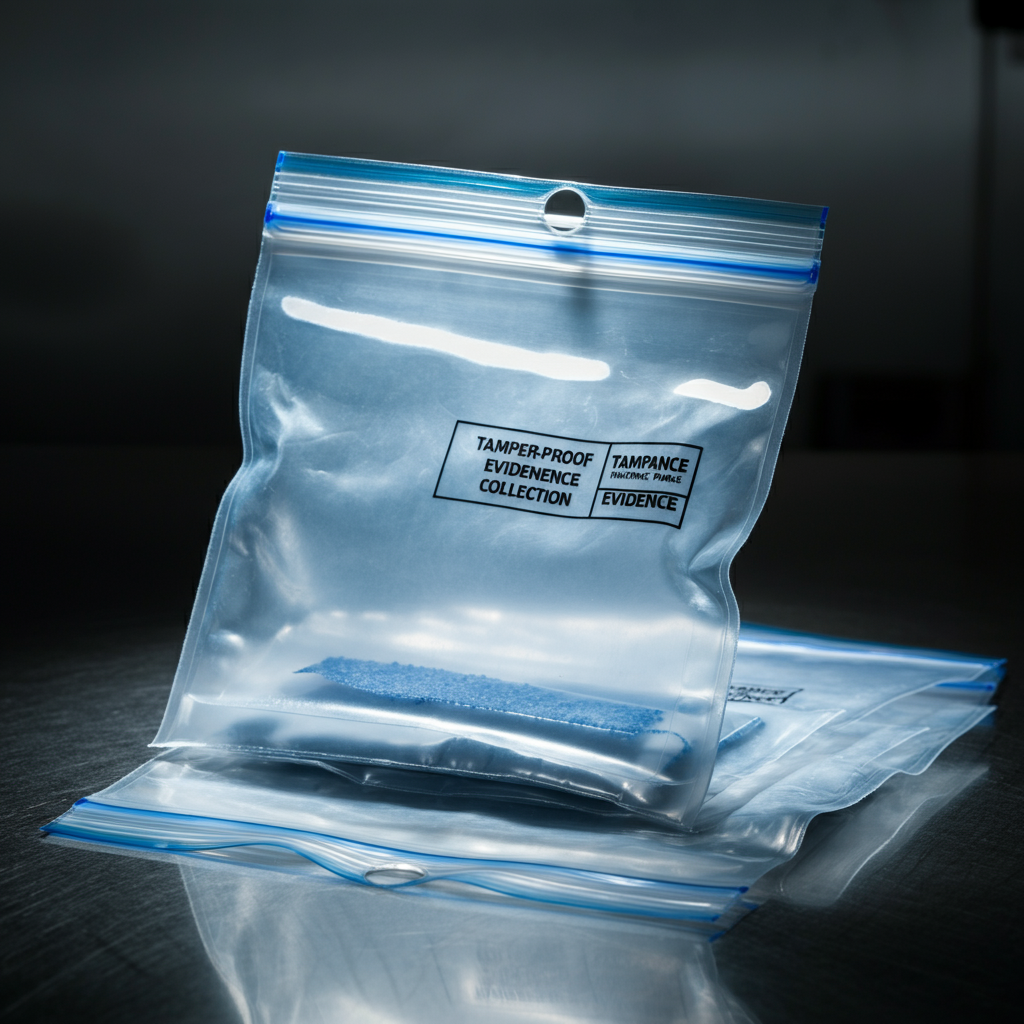
Magnifying Lens: For close examination of small items or trace evidence such as fibers, hair, or scratches. It is a essential tools in forensic science, used to closely analyze evidence such as fingerprints, fibers, and trace materials at crime scenes or in the lab.

Footprint Casting Kit: Includes plaster and mixing tools to create casts of footprints or tire tracks found at the investigation site.
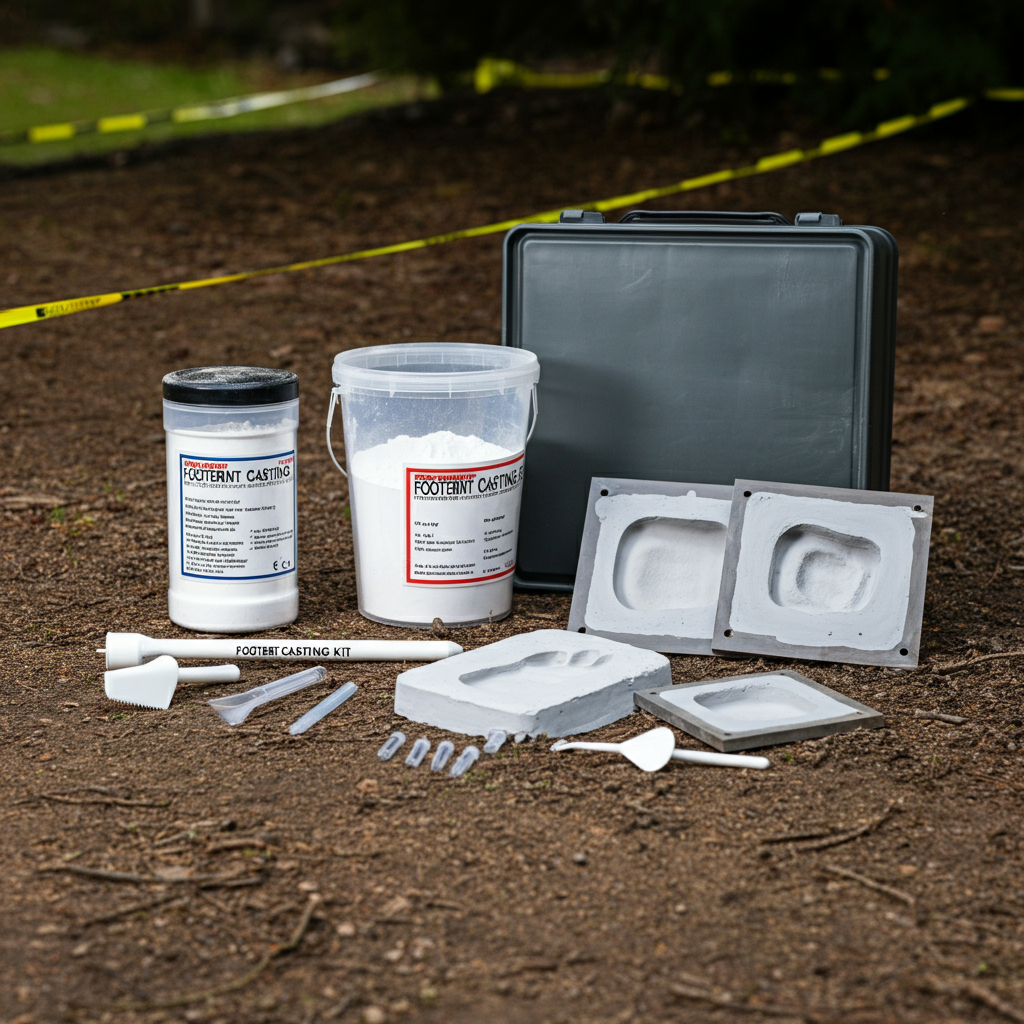
Chemical Testing Solutions: For identifying substances such as drugs, toxins, or unknown liquids found at crime scenes.
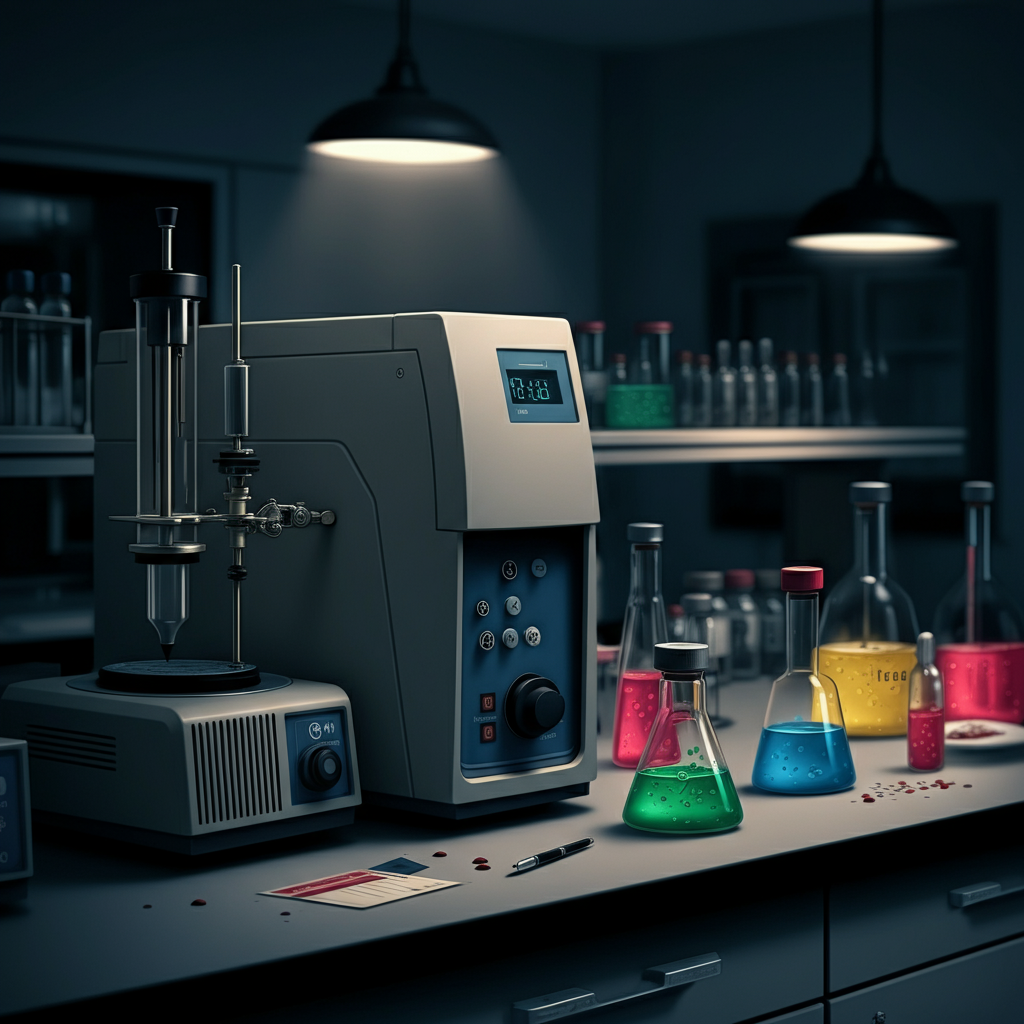
Microscope: A compact microscope with slides for detailed analysis of fibers, insects, and microscopic particles.
Many forensic science kits also include tools for fiber analysis, such as tweezers and evidence collection bags and labels.
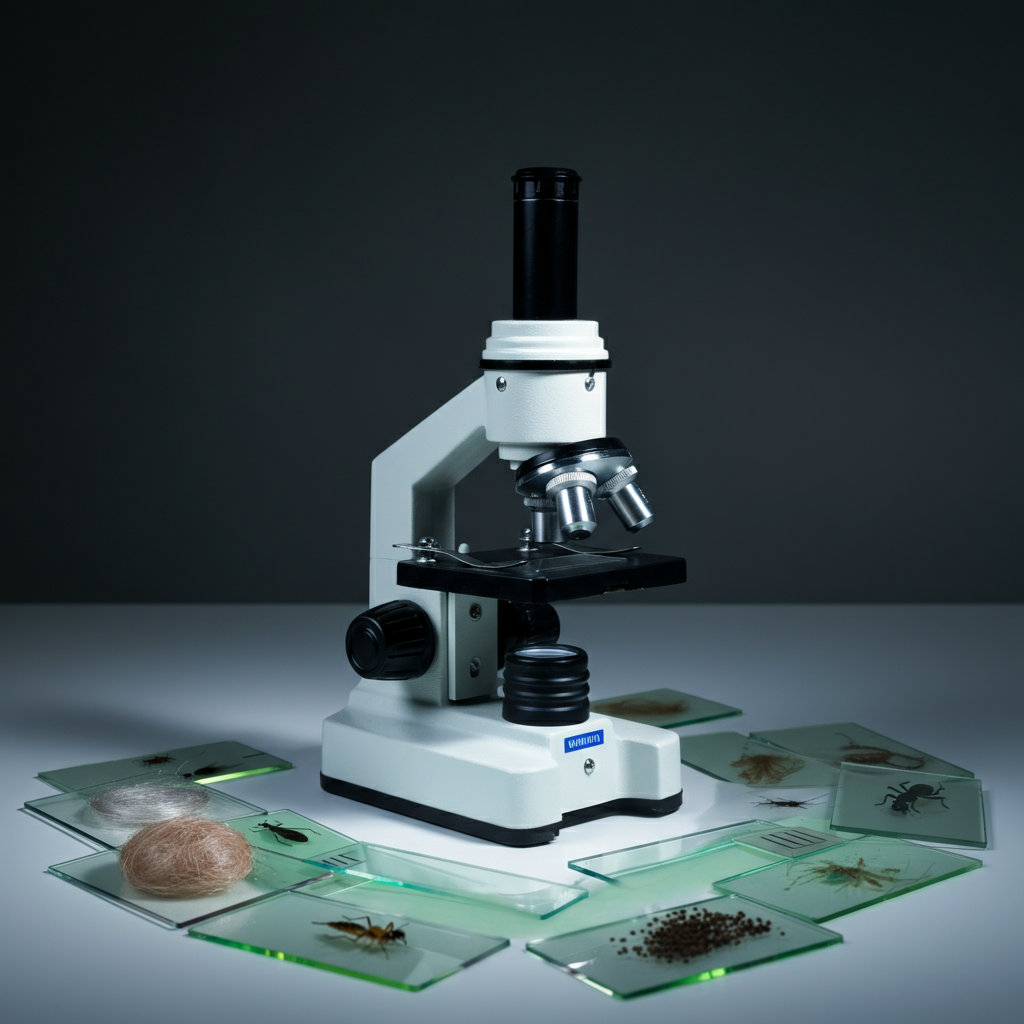
Notepad and Crime Scene Sketching Tools: To record observations and create diagrams of crime scenes for further analysis.
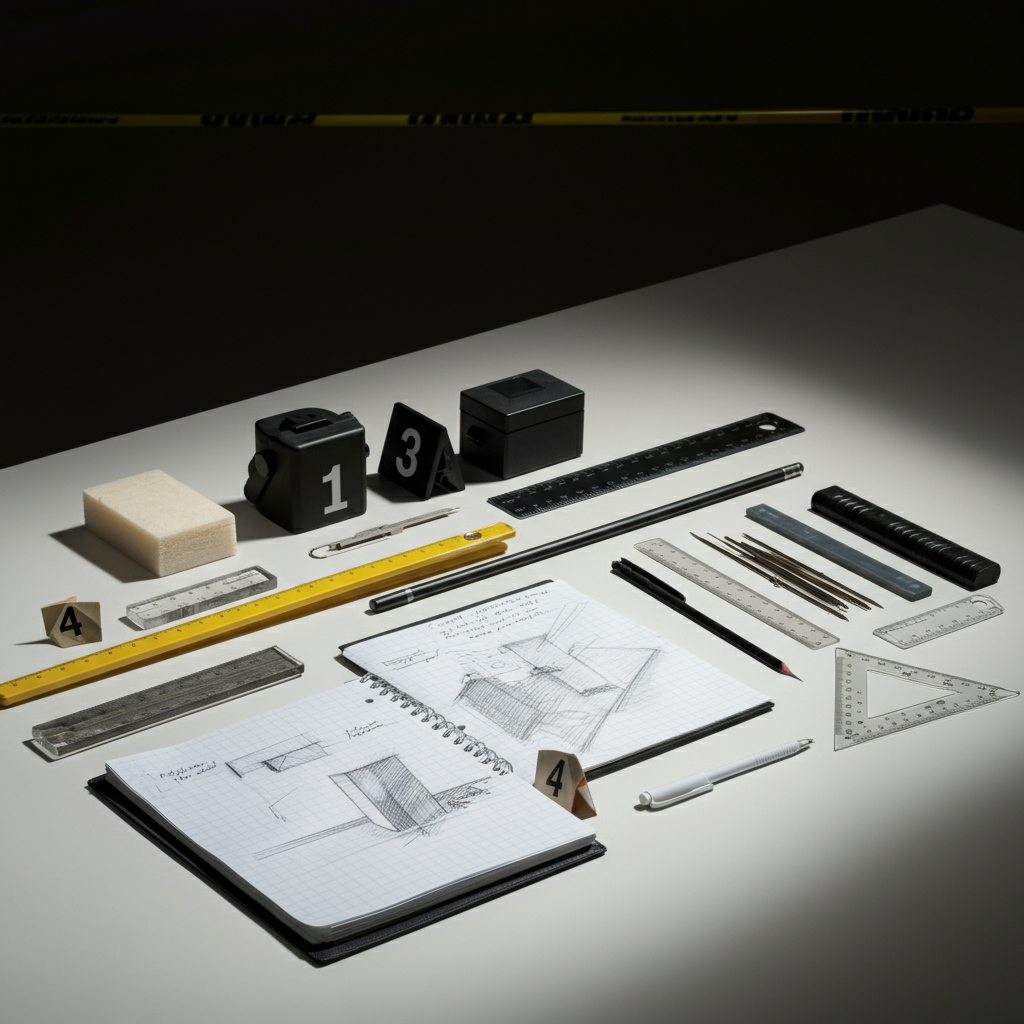
Tweezers and Forceps: For handling small or delicate evidence without damaging it, such as fibers or biological samples, without contaminating them.
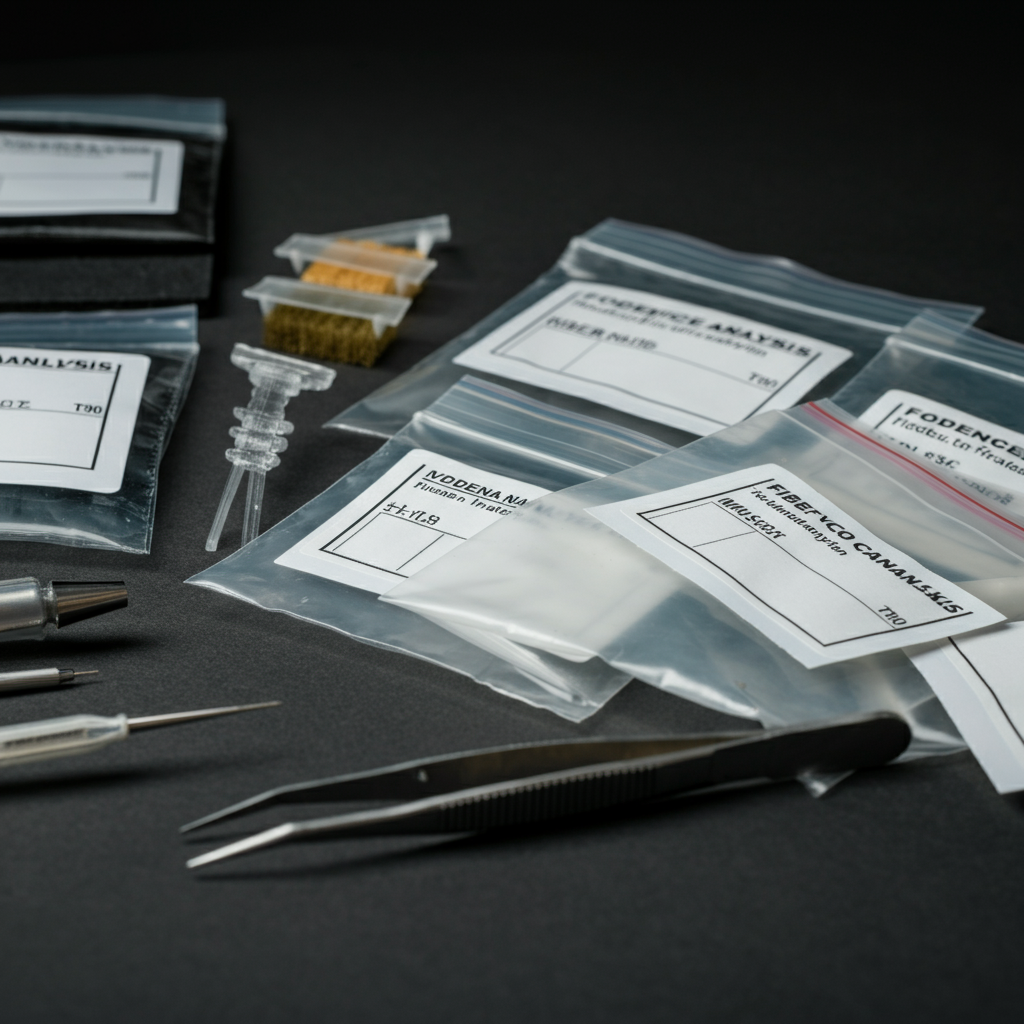
Protective Gloves and Face Masks: To ensure the investigator’s safety and preserve the integrity of the evidence by preventing contamination.
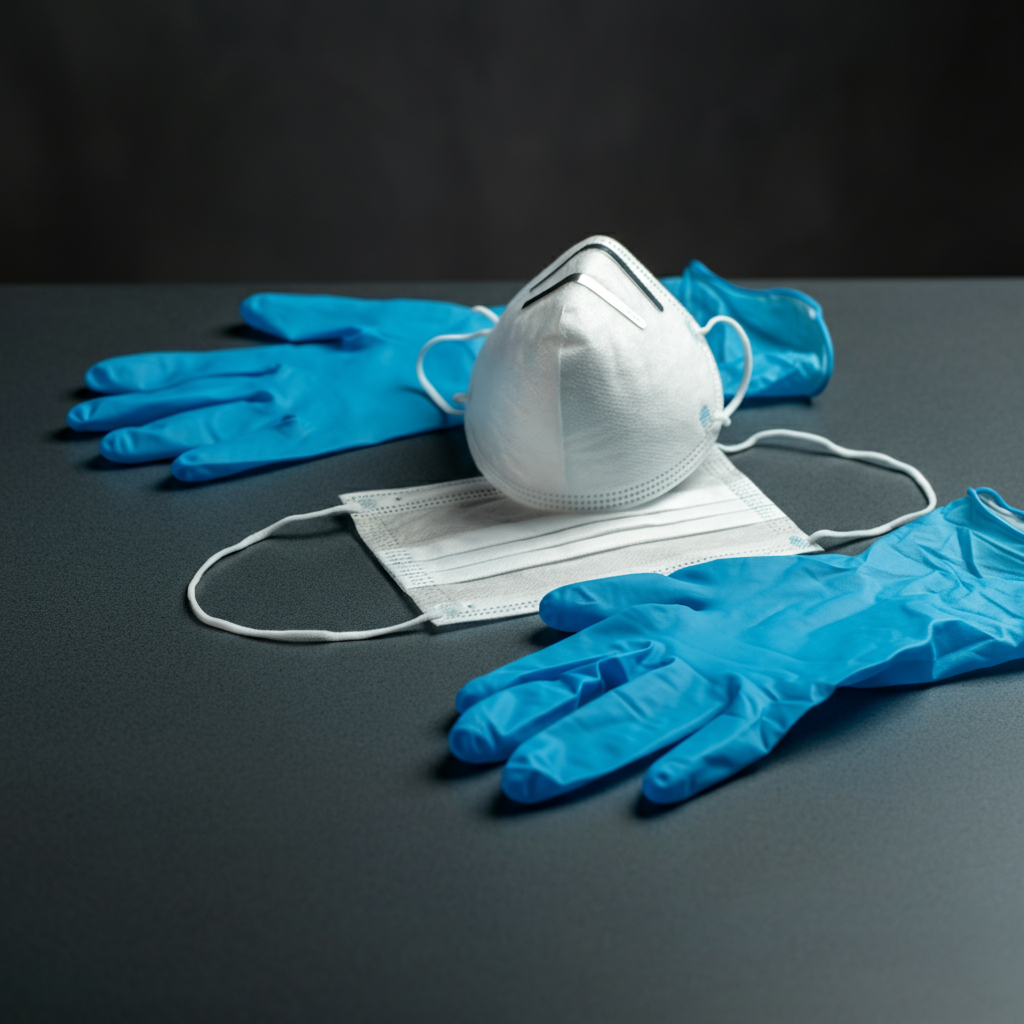
Camera and Measuring Tools: For capturing photographic evidence and documenting the precise dimensions of objects or distances within the crime scene.

Also Read: Forensic Photography to Solve Crime
Additionally, some forensic science kit provide supplies for DNA extraction or blood analysis, offering a hands-on learning experience for understanding the basics of genetic material and its role in crime-solving.
Instruction manuals or guides are often included, detailing the proper techniques and procedures for using each tool, ensuring an educational and immersive experience. These kits are ideal for individuals interested in science, criminology, or simply learning more about the investigative process.
Different types of forensic science kit focus on specific areas of forensic investigation. Fingerprinting kits teach you how to lift, preserve, and analyze fingerprints from various surfaces. DNA analysis kits demonstrate the basics of genetic identification using safe, simulated materials. Crime scene detective kits provide a comprehensive overview of evidence collection and processing. Ballistics kits explore trajectory analysis and bullet matching techniques. Chemistry-focused kits teach how to identify unknown substances and analyze trace evidence.
The educational value of these kits extends far beyond simple entertainment. They provide hands-on experience with scientific methodology, introduce students to real-world applications of chemistry, biology, and physics, and help develop critical thinking and analytical skills that are valuable in many career paths.
Benefits of Using a Forensic Science Kit
Forensic science kits offer numerous educational advantages that make them valuable tools for students exploring STEM fields. These benefits extend well beyond the immediate excitement of playing detective.
The hands-on learning experience provided by these kits is perhaps their greatest strength. Rather than simply reading about forensic techniques in textbooks, students can actively participate in the scientific process. This tactile approach helps reinforce theoretical concepts and makes abstract ideas more concrete and memorable.
Critical thinking skills receive significant development through forensic kit activities. Students must analyze evidence, form hypotheses, and draw logical conclusions based on their observations. This process mirrors the analytical thinking required in many professional fields, not just forensic science.
Problem-solving abilities are naturally enhanced as students work through simulated crime scenarios. Each investigation presents unique challenges that require creative approaches and systematic thinking. Students learn to break down complex problems into manageable components and develop methodical approaches to finding solutions.
Attention to detail becomes crucial when working with forensic evidence. Students quickly learn that small observations can make significant differences in their conclusions. This skill proves valuable in many academic subjects and professional environments where precision and accuracy are essential.
Real-world application of scientific principles becomes apparent as students see how chemistry, biology, and physics concepts directly relate to solving practical problems. This connection helps students understand why they’re learning these subjects and how they might use this knowledge in future careers.
How to Choose the Right Forensic Science Kit
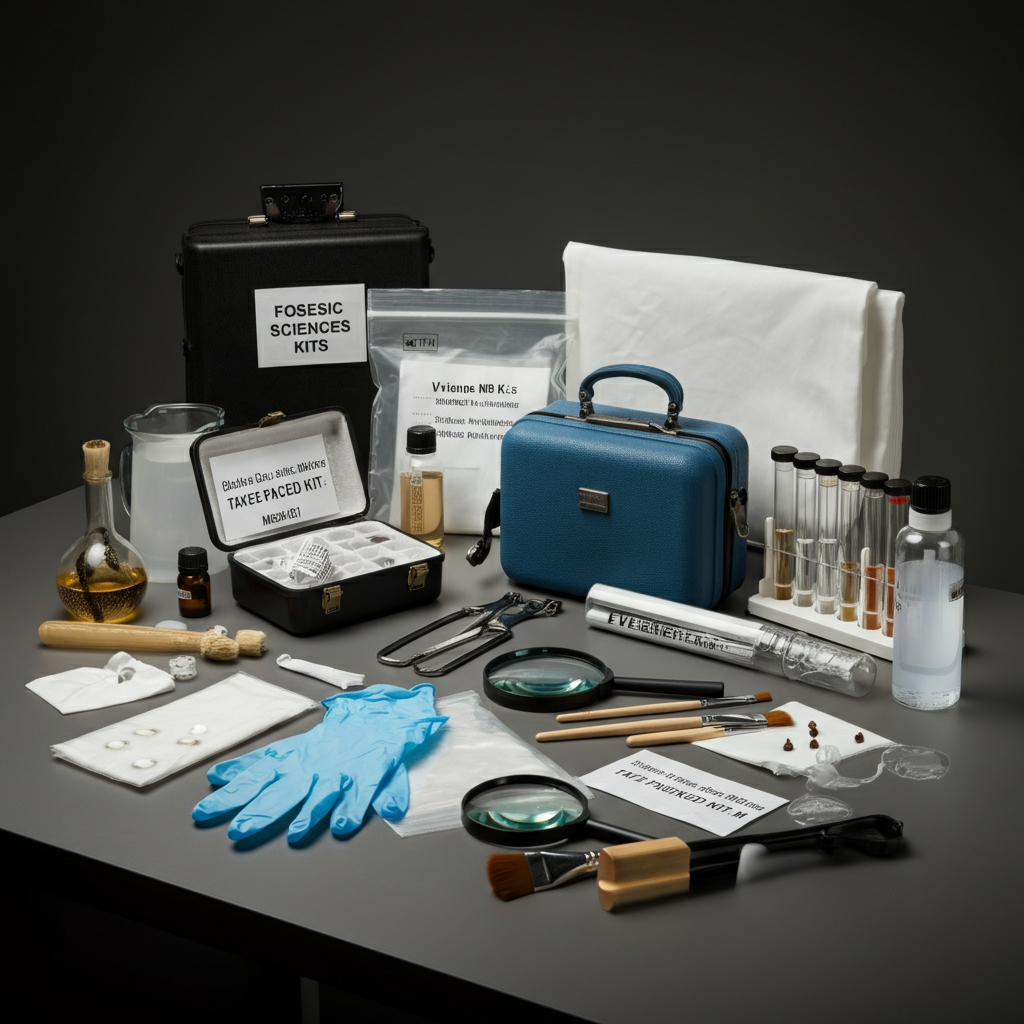
Selecting the appropriate forensic science kit requires careful consideration of several important factors to ensure the best learning experience and value for your investment.
Also Read: How Can Blood Typing Be Used In Forensics (2025)
Age appropriateness should be your first consideration. Many kits are designed for specific age ranges, with varying levels of complexity and safety requirements. Elementary school students might benefit from basic fingerprinting and observation kits, while high school students can handle more advanced chemistry and analysis techniques.
Skill level compatibility ensures that the forensic science kit provides appropriate challenges without being overwhelmingly difficult. Beginners should start with comprehensive kits that provide detailed instructions and basic concepts, while students with some scientific background might prefer more advanced kits that assume certain knowledge.
Safety considerations are paramount when choosing any scientific forensic science kit. Look for kits that include proper safety equipment and clear safety instructions. Ensure that all chemicals and materials included are safe for the intended age group and can be used in your available space.
Content alignment with interests helps maintain engagement throughout the learning process. If you’re particularly interested in DNA analysis, choose a kit that emphasizes genetics. Students fascinated by crime scene processing might prefer comprehensive detective kits that cover multiple investigation techniques.
Quality of materials affects both the learning experience and the kit’s longevity. High-quality tools and supplies provide more accurate results and can withstand repeated use. Read reviews and check manufacturer specifications to ensure you’re investing in a well-made product.
Budget considerations help narrow down options without compromising educational value. While more expensive kits often include additional tools and materials, many affordable options provide excellent educational experiences. Consider what you’re hoping to achieve and choose accordingly.
Top Forensic Science Kits on the Market
Several excellent forensic science kit are currently available, each offering unique features and educational opportunities.
The Nancy B’s Science Club Microscope and Activity Journal provides an excellent introduction to forensic microscopy. This kit includes a quality microscope, prepared slides, and detailed activities that teach students how to examine evidence at the microscopic level. It’s particularly well-suited for younger students who are just beginning to explore scientific investigation.
Thames & Kosmos Forensics Detective Laboratory offers a comprehensive crime scene detective kit experience. This kit includes over 40 different experiments covering fingerprint analysis, DNA testing simulations, and trace evidence examination. The detailed manual guides students through realistic crime scenarios, making it feel like a genuine investigation.
The Edu-Toys My First Forensic Kit provides an affordable entry point for beginning investigators. Despite its lower price point, this forensic science kit includes essential tools for fingerprinting, evidence collection, and basic chemical testing. It’s an excellent choice for students who want to explore forensic science without a significant financial commitment.
SmartLab Toys Squishy Human Body offers a unique approach by focusing on forensic anatomy and pathology. Students can explore how medical examiners determine cause of death and analyze biological evidence. This forensic science kit provides valuable insights into the medical aspects of forensic investigation.
These forensic science kits are widely available through online retailers like Amazon and educational supply companies. Many specialty science stores also carry forensic kits, and some museum gift shops offer unique options that aren’t available elsewhere.
How Forensic Science Kits Relate to Crime Scene Investigation
Understanding the connection between educational kits and professional crime scene investigation helps students appreciate the real-world relevance of their learning experience.
Professional crime scene investigators use many of the same basic principles demonstrated in forensic science kits. The techniques for collecting fingerprints, documenting evidence, and analyzing trace materials follow similar methodologies, though professional equipment is far more sophisticated and sensitive.
Evidence collection procedures taught in kits mirror real-world protocols. Students learn the importance of proper documentation, chain of custody procedures, and contamination prevention. These fundamental concepts remain constant whether working with a kit or investigating actual crimes.
Analytical thinking processes developed through kit activities directly apply to professional forensic work. The systematic approach to examining evidence, forming hypotheses, and testing theories represents the core of forensic methodology used by experts worldwide.
However, important limitations exist between kit activities and professional forensic science. Real crime scene investigation involves hazardous materials, advanced technology, and legal procedures that cannot be safely replicated in educational settings. Professional forensic scientists undergo years of specialized training and work with equipment costing thousands of dollars.
The legal aspects of forensic science, including courtroom testimony and evidence admissibility standards, are not addressed in most educational kits. Professional forensic scientists must understand complex legal requirements and communicate their findings to judges and juries.
Despite these limitations, forensic science kits provide an excellent foundation for understanding the scientific principles underlying crime scene investigation. They offer students a realistic preview of the methodical, detail-oriented work that characterizes this field.
Safety Precautions When Using Forensic Science Kits
Safety should always be the top priority when working with any scientific materials, and forensic science kits are no exception.
Personal protective equipment forms the foundation of safe kit usage. Safety goggles protect eyes from chemical splashes and flying particles. Disposable gloves prevent skin contact with chemicals and maintain the integrity of evidence samples. Lab coats or old clothing protect skin and regular clothes from stains and spills.
Proper workspace preparation creates a safe environment for experimentation. Choose a well-ventilated area with good lighting and easy access to running water. Cover work surfaces with newspapers or plastic sheeting to protect furniture and simplify cleanup. Keep a first aid kit nearby in case of minor accidents.
Chemical handling requires special attention and care. Read all safety warnings before beginning any experiment. Never mix chemicals unless specifically instructed to do so. Use only the amounts specified in instructions, as larger quantities can create dangerous reactions. Store chemicals properly when not in use, keeping them away from heat sources and out of reach of children and pets.
Waste disposal should follow both kit instructions and local regulations. Some chemicals require special disposal procedures and should never be poured down drains or thrown in regular trash. Contact local waste management authorities if you’re unsure about proper disposal methods for specific materials.
Adult supervision is recommended for younger students, particularly when working with chemicals or sharp tools. Even older students should inform adults about their activities and ask for help when needed.
Emergency procedures should be established before beginning any experiments. Know how to contact emergency services if serious accidents occur. Understand basic first aid procedures for common laboratory injuries like cuts, burns, and chemical exposure.
The Future of Forensic Science Education
The field of forensic science education continues to evolve as new technologies and teaching methods emerge.
Virtual reality and augmented reality technologies are beginning to appear in educational forensic programs. These tools allow students to explore realistic crime scenes without physical limitations and provide immersive experiences that were previously impossible to achieve with traditional forensic science kits.
Advanced simulation software enables students to analyze complex evidence scenarios using computer models. These programs can demonstrate sophisticated techniques like ballistics analysis and facial reconstruction that are difficult to replicate with physical kits.
Improved safety measures in educational kits allow for more realistic experiences without increased risk. Manufacturers are developing new materials that simulate dangerous substances while remaining completely safe for student use.
Integration with online learning platforms expands the educational value of physical kits. Students can access additional resources, share results with peers, and receive feedback from experts around the world.
Collaboration with professional forensic laboratories provides students with insights into current practices and emerging technologies. Some educational programs now include virtual visits to working crime labs and interactions with practicing forensic scientists.
As forensic science continues to advance, educational tools will likely incorporate new technologies like artificial intelligence and machine learning. Students may soon learn how computers assist in pattern recognition and evidence analysis.
Start Your Forensic Science Journey Today
Forensic science kits offer an exceptional gateway into one of the most fascinating and important scientific fields. They provide hands-on experience with real investigative techniques while developing critical thinking, problem-solving, and analytical skills that benefit students throughout their academic and professional careers.
The educational value of these kits extends far beyond the immediate excitement of solving simulated crimes. Students gain practical experience with scientific methodology, develop attention to detail, and learn how multiple scientific disciplines work together to solve complex problems.
For students considering careers in forensic science, these kits provide valuable insight into the day-to-day work of forensic professionals. They help students understand whether they have the patience, attention to detail, and analytical thinking required for success in this demanding field.
Whether you choose a comprehensive crime scene detective kit or focus on a specific area like fingerprint analysis, you’ll gain valuable skills and knowledge that enhance your understanding of science and its real-world applications. The investment in a quality forensic science kit pays dividends in educational value and career exploration opportunities.
Take the first step in your forensic science journey by exploring the many excellent kits available today. Who knows? Your investigation might lead to a lifelong passion for science and justice.






